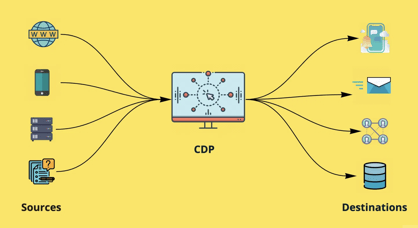Every year, the list of must-have technology for subscription and membership organisations grows. So, how can you select what's essential for your internet business's growth while avoiding the infamous shiny object syndrome?
It's easy to become lost in the vast array of options, platform tools, and programmes available. (It's no surprise that subscription and membership business owners are stressed.) To make matters even more complicated, online businesses must consider not just the finest applications, tools, and systems to utilise, but also how these systems 'speak' to one another to develop the optimal client retention and profit plans. Here is the list of tools that you should incorporate into your subscription business:
1. Recurring Billing System
A subscription or membership business's lifeblood is a recurring billing scheme. This is when a merchant automatically charges the consumer for whatever products or services are being offered on a predetermined timetable.
When a subscriber provides their credit card information, this payment system is set up so that they may be invoiced regularly. Payments will be taken until the subscriber cancels the service or the subscription ends. You and your customers will both benefit from a recurring billing system. You have a steady stream of money, and it's easy for clients to forget about making monthly payments. One of the essential aspects for increasing client retention in subscription and membership organisations is this method.
2. Order Management System
In a subscription business model, the subscribers receive certain items and services at different times. Customers can sometimes determine the frequency of their orders, while other times things are accessible 24 hours a day, 7 days a week.
For instance, with SaaS enterprises, the product is available 24 hours a day, seven days a week, and all the consumer needs to do is log in to utilise it. This technology is beneficial to membership and subscription organisations that offer services to customers at different times.
When it comes to scheduling products and services, dealing with various consumer requirements might be difficult. With an order management system, however, you can rest assured that your consumers will receive the items and services they desire at the appropriate time.
3. Content management system (CMS)
Creating and marketing subscription and membership content that maintains consumers should be simple with an effective CMS. A content management system (CMS) helps you to extend the reach and life cycle of your communications and other forms of material.
A content management system (CMS) is a must-have technology since it allows your content to work harder while you do less effort. Because you can customise different portions of your product or service to certain members, you can better satisfy the demands of potential clients.
4. Marketing and marketing automation
How you promote your subscription and membership company has a big impact on customer retention. Marketing isn't only about attracting new consumers; it's also about keeping the ones you already have.
Marketing automation covers email marketing as well as a slew of additional features that may help you promote and sell subscriptions, memberships, and online courses, among other things. Target distinct members depending on their frequent use of your services or products. Your marketing automation should take the information gleaned from customer behaviour and transform it into better items, a wider product offering, or just better service in general
5. Analytics
Analytics gives you the ability to observe how your material is doing, how subscribers and prospects navigate your digital sites, content, and products, how subscribers communicate with one another and seek customer care, and more. Simple to complicated and expensive solutions are available. Google Analytics is free (as long as you feed it your data), but Adobe Analytics and others have a substantial licensing price.
6. Customer Data Platform (CDP)

The customer data platform is the next jigsaw piece, and it's intimately connected with the content management system, marketing automation, your backend systems, and more.
The "CDP'' platform seeks out, collects, and curates audience data derived from your relationships with subscribers, as well as the consumption of your content and products. It then correlates the data with demographic or other data in your subscriber management system (or CRM, Sales Platform, or other) and allows you to analyse your known users to gauge resonance and performance. An important source of data put into a CDP is Marketing Automation.
A CDP's most important output and advantage to you is an in-depth and real-time knowledge of what is and isn't resonating with your subscribers or prospects, allowing you to iterate to achieve the intended outcomes.
7. Data Management Platform
A "data management platform," or DMP, is a platform that collects all or most of the data you or others generate, including cookies, anonymous user data, third-party data, and other types of data.
Unlike the more concentrated outputs of a CDP, a DMP necessitates a thorough understanding of what you want to learn from the data, how it needs to be integrated and massaged, and what programming is required to employ models and algorithms. A DMP, as previously said, is designed to be all-encompassing, whereas a CDP is just focused on subscribers, prospects, and other people you would consider clients.
At Evolok we're professionals in working with subscription and membership businesses, providing a deep dive into their statistics to illustrate the true revenue potential for your digital publishing business. We will help your business to deploy a robust paywall platform. If you would like more information on these features please click below.